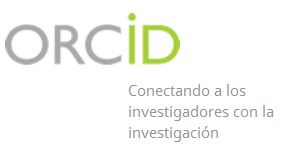Vitamina D y Salud Pública: paradigmas y controversias en nutrición comunitaria en Guatemala
Keywords:
Vitamina D, salud pública, nutrición comunitaria, artritis reumatoide.Abstract
Introducción: La prevalencia de deficiencia e insuficiencia de vitamina D alrededor del mundo está bien documentada en diferentes grupos etarios. En los últimos años la Salud Pública ha presentado una preocupación debido a la malnutrición de micronutrientes, entre los cuales la vitamina D ha tomado una especial importancia por su participación en múltiples procesos metabólicos del organismo, cuyo déficit es considerado como la pandemia del siglo XXI. La artritis reumatoide es un ejemplo de una enfermedad asociada a esta deficiencia. Objetivo: Destacar la importancia que tiene la deficiencia e insuficiencia de vitamina D como problema de salud pública, y su influencia en la salud comunitaria en Guatemala. Método: Se realizó una revisión bibliográfica y documental sobre el tema de la deficiencia e insuficiencia de vitamina D como problema de la salud publica en el contexto internacional. Resultados: Se comprueba que la deficiencia de vitamina D es una pandemia global, que tiene repercusiones para el individuo y la sociedad. La artritis reumatoide es un ejemplo de ello. Discusión: Se destaca la necesidad del fortalecimiento en nutrición comunitaria como modelo que fundamente la forma en que las personas y la comunidad deben ayudarse para tratar de desarrollar soluciones a los problemas que los afectan internacionalmente y en particular en Guatemala.
ABSTRACT
Introduction: The prevalence of deficiency and vitamin D insufficiency around the world is well documented in different age groups. In recent years the Public Health presented a concern due to the malnutrition of micronutrients, including vitamin D has taken on a special importance for his participation in multiple metabolic processes in the body, whose deficit is considered to be the pandemic of the 21st century. Rheumatoid arthritis is an example of a disease associated with this deficiency. Objective: To emphasize the importance of the deficiency and insufficiency of vitamin D as a public health problem, and its impact on community health in Guatemala. Method: Performed a literature review and documentary on the topic of vitamin D insufficiency and deficiency as a public health problem in the international context. Outcomes: We found that vitamin D deficiency is a global pandemic that has implications for the individual and society. An example of this is rheumatoid arthritis. Stands out the need of strengthening in community nutrition as a model that supports the way in which people and the community should help to try to develop solutions to the problems that affect them, international and Guatemala.
Downloads
References
2. Scragg R. Vitamin D and public health: an overview of recent research on common diseases and mortality in adulthood. Public Health Nutrition. 2011;14(9:1515-32.
3. Yngve A, Haapapa I. Vitamin D in the prevention of disease – what evidence do we still need? Public Health Nutrition. 2011; 14(9):1512-4.
4. Bready M. La nutrición comunitaria desde la perspectiva de la nutrición pública. Bol Nutr Infantil Can. 2001;(5):7-17.
5. Acuña IM. Paradigma sistémico y fortalecimiento en nutrición comunitaria. Portales Médicos. [citado 9 Nov 2011]. Disponible en: http://www.portalesmedicos.com/publicaciones/articles/2954/1/Paradigma-sistemico-y-fortalecimiento-en-nutricion-comunitaria.html
6. Rody N. Empowerment as organizational policy in nutrition programs. A case study from the Pacific islands. J Nutrition Educ. 1988;20(3):133-41.
7. Palmieri M, Delgado HL. Análisis situacional de la malnutrición en Guatemala: sus causas y abordaje. Cuaderno de Desarrollo Humano. 2009/2010-7. Programa de las Naciones Unidad para el Desarrollo. Guatemala.
8. Gilabete Y. et al. La vitamina D: evidencias y controversias. Actas Dermosifiliográficas. 2011;102(8):572-88.
9. Wagner CL, Dawodu A. Prevention of vitamin D deficiency in mothers and infants worldwide a paradigm shift. Paediatr Int Child Health. 2012;32(1):3-13.
10. IOM report on calcium and vitamin D. Washington, DC: Institute of Medicine, 2010. http://www.iom.edu/vitaminD
11. Stagi S, Bertini F, Cavalli L, Matucci-Cerinic M, Brandi ML, Falcini F. Determinants of vitamin D levels in children, adolescents, and young adults with juvenile idiopathic arthritis. J Rheumatol 2014 Sep;41(9):1884-92.
12. Hong Q, Xu J, Xu S, Lian L, Zhang M, Ding C. Associations between serum 25-hydroxyvitamin D and disease activity, inflammatory cytokines and bone loss in patients with rheumatoid arthritis. Rheumatology (Oxford). 2014 Nov;53(11):1994-2001.
13. Tulchinsky TH. Varavikova EA. What is the “New Public Health”? Public Health Reviews. 2010;32(1):25-53.
Downloads
Published
How to Cite
Issue
Section
License
Those authors who have published with this journal, accept the following terms:
a. The authors will keep their copyright and guarantee the magazine the right of first publication of their work, which will be simultaneously subject to the Creative Commons Attribution License that allows third parties to share the work as long as the author and first publication of this magazine are indicated.
b. The authors may adopt other non-exclusive license agreements for the distribution of the published version of the work (e.g., deposit it in an institutional telematic archive or publish it in a monographic volume) as long as the initial publication in this journal is indicated.
c. Authors are allowed and recommended to disseminate their work through the Internet (e.g.: in institutional telematic archives or in their web page) before and during the submission process, which may produce interesting exchanges and increase the number of citations of the published work. (See The effect of open access).





